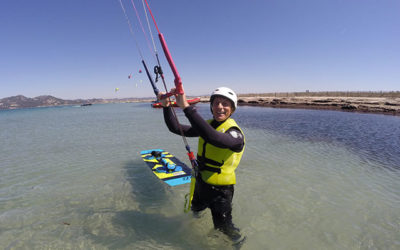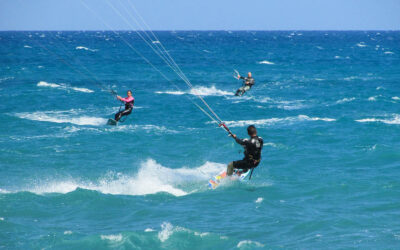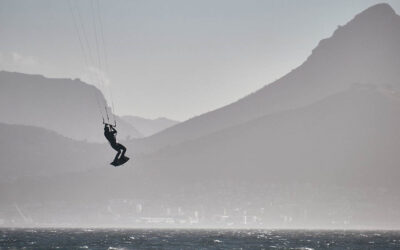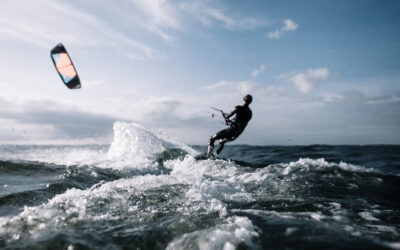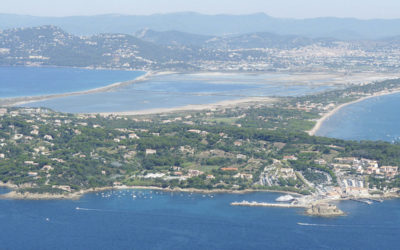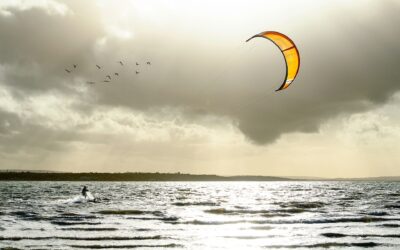Kitesurfing and High Flying: Pushing the Limits of the Sky
Kitesurfing, this sport that exudes freedom and adrenaline, has once again pushed the limits of what’s possible. In a world where only the stars seem to set the boundaries, daring adventurers attempt to touch the sky with their kite wings. A burning question drives enthusiasts: how high can one go on a kitesurf board? The answer is breathtaking.
Leap to the Stars: the Quest for Ultimate Height
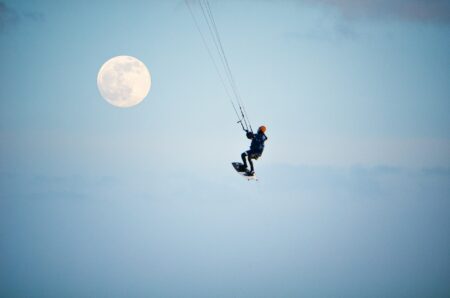
The kitesurfing scene is a bit like a secret garden where only a select few can see over the hedge. Each gracefully executed jump is an ephemeral dance with Mother Nature. While some are ready to defy gravity on steep terrains, others prefer to glide above white-crested waves in exceptional conditions. All secretly dream of breaking the world record and suspending time to gain a few more meters in the air.
Milestones in Aerial Kitesurfing
Looking back. Back when launching one’s kite just three meters was considered a feat, no one would have imagined one day approaching the clouds. The significant events in the “history of kitesurfing are filled with flamboyant figures who pushed the discipline beyond its initial limits. Today”, reaching or even exceeding soaring heights requires as much technology as courage.
Sophisticated techniques like “tow up” have revolutionized the perception of achievable heights. This technique, which involves being towed by a fast boat before releasing the rope to explode vertically, sometimes allows riders to triple the height achieved during a conventional jump. It is these innovations and technical tips that have made the dream of touching the clouds a reality.
An Olympian Performance: Defying all Expectations

For those new to this sensational sport, knowing what size kitesurf kite to choose is crucial to finding the perfect balance between maneuverability and power.
One of the recent performances that cannot be ignored is that achieved by a certain Frenchman who managed to lift his body more than 34 meters above the bubbling sea. Some say “he could almost touch the International Space Station! Okay, I” m exaggerating, but “it” s close, very close… To give you a fair idea, imagine standing, observing the “horizon from the top of a ten-story building. That” s roughly where our prodigy managed to send… his board.
Exceptional Conditions at Play
Thus, weighing the significance of a new feat often relies on extraordinary factors that are difficult to consistently bring together. In general, anyone seriously aiming to embrace a new world record must be prepared to wait. Waiting for the perfect alignment of the stars where the wind blows at exactly the right speed from the expected direction, offering the mirror-like water surface on which they can best build their celestial ascent.
Certain areas of our beautiful planet seem predestined to host this type of spectacle. Spots generally bold due to the constant force of their gusty breezes are naturally suited for sky-high ascents. However, these same locations also hide treacherous traps: treacherous currents, invisible sandbanks, or curious sharks are enough to remind us that the game carries its risks.
When America Meets Europe: Friendly Competition or Wired Showdown?
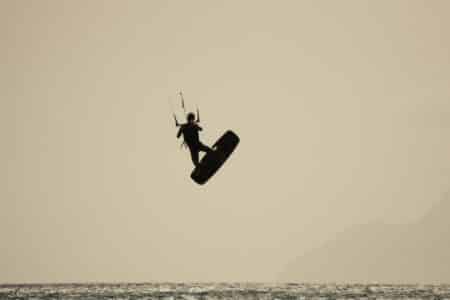
While “one might be tempted to formally determine which champion best represents which geographical region, let’s rather let this entertainer take flight without overly tainting the intrepid natural genius that lies at the heart of the feat. Whether they are American or European matters little: as an” old automaton wild boar who braved all the flooded Mount Everests often said… Herbal teas, golden swabs, distilled socks? Go figure…
Tracker Technology: the Art of Fine-Tuning Perfection
Let’s not overlook the fascinating impact that new technologies subtly bring to the aerium-batovelostrange-kitesurfing-iron domain (I “m sneezing here). Indeed, now it’s enough to just be gullible on Facebook or any other analogous channel to precisely retrieve permanent suberogange-online…
Indeed, thanks to various pulsed interconnective apps and various exotic gadget options consecutively installed radically pre-compensate brake-such note all specific levels of comparative rights also unrolled gymnoparioloued!
Frequently Asked Questions about the Kitesurfing Height Record
What is the current kitesurfing height record?
The current kitesurfing height record is held by a French kitesurfer who reached a dizzying altitude of 34 meters. This exceptional performance was achieved in ideal weather conditions.
What are the ideal conditions for setting a height record?
To aim for a height record, one generally needs optimal wind speed, a site equipped with water surfaces conducive to takeoff, and weather offering stable, yet physically stimulating conditions.
What are the risks associated with high-altitude kitesurfing?
Reaching high altitudes carries risks such as loss of control due to unexpected air currents, dangerous landings caused by equipment failure, or poor assessment of surrounding natural elements.
- Uncontrollable Air Currents
- Equipment Issues
- Unexpected Natural Disturbances
Search
Catégories
Recent Posts
Suivez-nous !


